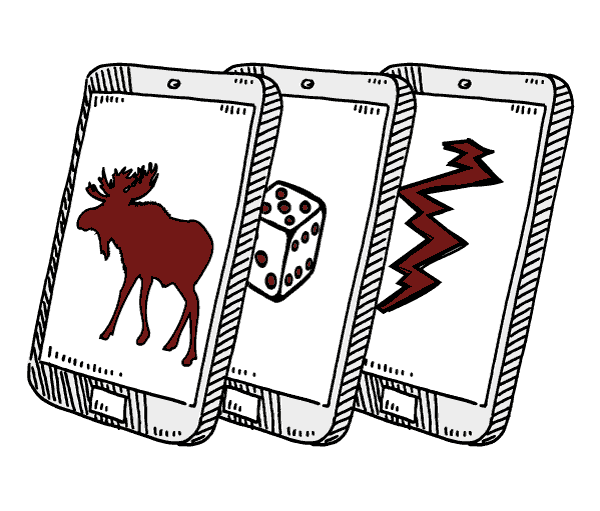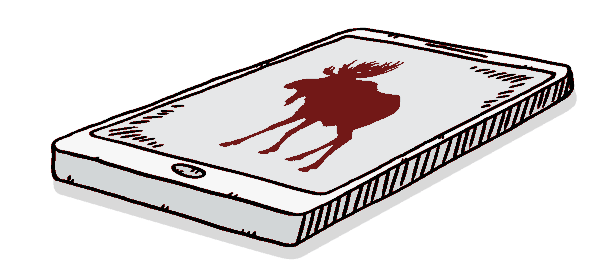“There’s an app for that” went Apple’s marketing phrase, and it beautifully summed up the idea that there is a wealth of purposes that a mobile app can be developed for. Whatever purpose you need it for, Rare Form can develop your mobile app from our central Oxford studio with minimum fuss and maximum expertise. We are the #1 App Development agency for Oxford.

It’s a fair question. Many people who come to us armed with their great idea believe an app is the solution they need, when the reality is that what they want to do can be accomplished just as effectively (and for less cost) with a website. But there are times when a mobile app is the answer to your business needs. Perhaps it needs to be usable offline, or it needs to rely on device-specific features. Whatever the case, our skilled team is happy to discuss your ideas with you and give you an honest opinion of whether app development is even your best course of action. We can also advise what sort of app it should be – native, hybrid, or web.

If you need your solution to be a native iOS app or Android app, our hotshot mobile app developer team has the skills to deliver that. We can even develop mobile applications for Windows Mobile, (it is actually still a thing). We also deliver Hybrid apps and Web apps (including Progressive Web Apps). Hybrid Apps behave as if they are native, so they are still downloaded from the app store for your device and appear on the home screen, but require less programming and have cross-platform capability. Web apps work anywhere there is a web browser, so not just on phones and tablets. Which type you decide on will depend very much on your needs and budget, and our team is happy to share their experience to help you choose the optimum solution.

One of the most exciting developments in App Development, PWAs (no, not Programs With Attitude) are making a big impact. Firstly, they offer a way to get an app onto your customers’ mobile devices without having to go through the App Store. In addition, the reduced coding overheads mean they are cheaper to develop and also load faster, giving your users a better experience. They are also an excellent way to test the viability of your idea by delivering a working solution for far less time and money than a native app, giving you a chance to properly judge how well the app works for you and whether to take it further.

Our motivation has always been to provide the best end product possible for our clients. Because of this, we take a carefully considered approach with every project.
Research
We’ll be honest – this is where we ask an inordinate amount of questions. Not just of you, but the project in general. How will it work? Who is using it? What are the goals? What are the limitations? These are the questions that just get us started down an investigative rabbit hole, because the deeper we delve into the requirements, the clearer our vision of the end product and the journey towards it.
Design
This is where we build the app in theory before we build it in code. The user journey is mapped out and refined. The user interface is designed to be attractive and intuitive.
Build and test. And test. And test.
Once the preparatory work is done, the coding begins and your app is put together in the programming language necessary for your requirements. Usually, coding is the biggest part of the app development process because rarely is any app built in code and ready off the bat – debugging and rewrites are the norm. But because of the amount of work we put in prior to development, this is reduced significantly.
Deployment
Finally, your app is ready to be put in the hands of people who will use it. We will deal with getting it up on the Apple or Google app stores, or deploying it to your systems if it’s an enterprise app, or getting it on the web if it’s a web app or progressive web app. But far from being the end of the process, in many cases, this is the beginning as there are aspects of use that aren’t apparent until the app is in use in the wild. We can stay with you to maintain and develop the app further based on what we discover once it’s actually in the hands of the intended audience.

Our developers have oodles of years of solid experience in full-stack development. Take Joss, who heads up the development team, he has over thirty years of commercial programming experience, holds an honours degree in artificial intelligence, and wrote the original software for 3D printers. He also has multiple patents to his name under his belt. And it’s a nice belt, (he didn’t 3D print it though).

App development isn’t cheap, which is why we always talk to our clients first to ensure an app is actually what they want. Even a relatively simple app still needs many hours of development time – interfaces need to be designed, UX has to be considered, and code needs to be written. Then there is testing, which may result in redesign and code rewriting. All of this mounts up, and developers aren’t cheap. Costs of £5,000-£300,000 are realistic, depending on the app and what it needs to do. The average app usually comes in somewhere in the tens of thousands.
A web app works inside a web browser and is run from a web server. It can be the entire page, (like Google Docs),or part of it (like online chat functionality offered by numerous sites). The key is that it is a program that is not run on your device but over the internet. As such, they don’t need to be downloaded but an active connection is needed to access them. Also, because they exist remotely, the user never needs to be concerned with keeping the app up to date.
A Progressive Web App is essentially a web app, but with superpowers. These super-powers are
Native apps are written specifically for the device they are to be used on, in the language that that device ‘speaks’ – i.e. Java for Android, Swift and Objective C for iOS, and .NET on Windows phones (yes, like AM radio they are still a thing).
Being native, and as long as they are well written they have the advantage in speed and ease of use. The main drawback is the need to build and maintain more than one app in order to be available on more than one platform.
A hybrid app is a sneaky beast. Being written in web technologies (like HTML5, CSS, JavaScript) it is basically a web app that is delivered inside a container program that has enough functionality to run the app. Like a Browser Lite, if you will. But here’s the sneaky part, a hybrid app hides the browser so all you see is the app. Because it’s done this way, Hybrid apps appear to be the same as native apps. They can be downloaded from a device’s app store, they have an icon on the home screen, they are even able to access the device’s hardware features (accelerometer, camera, etc) if the container is given that functionality. So the container is native, the app inside it is not, and that is the Hybrid nature of it.

Web Design
Hiring a web designer in Oxford

Social Web Design
Discord: the best communication tool for business (vs. Slack or Zoom)

Marketing Web Design
Importance of credibility in web design (backed by statistics)